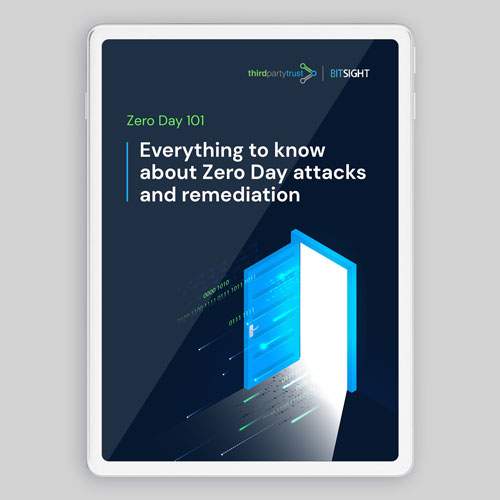7 reasons to use a Third Party Risk Management tool
Have you noticed how many repetitive tasks are involved in vendor risk assessments and third party risk management?
From chasing vendors via email and phone to have them fill out security questionnaires, to vendor tiering, periodic reassessments, and continuous monitoring; teams spend a considerable amount of working hours dealing with things that could easily be taken off their plate with automation and process optimization with a fit-for-purpose third party risk management tool.
Enterprises are under ever-building scrutiny to find and nurture secure vendor relationships, while vendors are facing higher demand to comply with risk assessments and promote their security postures. Both ends struggle with manual and repetitive tasks, making risk assessments painful, but necessary.
How a third party risk management tool can make your process more efficient
1. Saving time and resources
Resource bandwidth is something most companies and security teams watch carefully. However, vendor assessments only increase as your business grows.
Over the last two years, world events have accelerated digital transformation and the number of vendors that organizations are assessing and reassessing continues to grow. As programs expand, having a third party risk management tool is no longer a nice-to-have; it’s essential for managing an ever-growing vendor ecosystem.
Read More: What is a Vendor Risk Assessment?
Utilizing a third party risk management tool that streamlines, centralizes, and automates many of the tasks involved in the vendor risk assessment process can increase efficiency up to 75% (as told by our customers).
Most manual tasks can be automated to save time and money: kicking off the intake of vendor data, managing calendars, emailing reminders, updating business owners, alerting about overdue or missing security artifacts, and more.
2. Reducing staffing costs
Adding human capital adds costs, but optimizing processes to be more efficient reduces costs. Automation and dedicated tools can empower your team to do more with the same resources, and use the extra time to focus on higher value activities.
Think of how much time your team spends on third party risk assessments and administrative tasks that feel like “check-in-the-box” duties instead of risk mitigation efforts. Now think how you would relocate those hours into more strategic projects related to cybersecurity, privacy, compliance, certifications, audits, and more.
3. Staying ahead of zero day vulnerabilities
Conducting due diligence, initial assessments, and periodic reassessments is standard for managing an organization’s third party risk, but third party security issues may suddenly happen anytime during your relationship with a vendor.
But your team can’t spend 100% of their time looking for red flags. Continuous monitoring and real-time alerts can be the difference between business as usual and operational risk —With Log4j, Kaseya, and SolarWinds as the latest reminders of the impact supply chain attacks can have.
Read More: How Continuous Monitoring Enhances Third Party Risk Management
The greater use of technology means that companies will be less reliant on people to perform ‘point in time’ assessments in the future and they’ll have a more accurate and timely understanding of the risk that exists within their environment.
4. Centralizing efforts to increase collaboration
Managing all of your vendors in one place provides an organized approach for your third party risk program. Instead of switching between apps, you can bring everyone together with customized permissions for your team, your vendors, internal business owners, and managed service providers. This ensures increased visibility with the right level of access.
In addition to centralized collaboration, ThirdPartyTrust offers a network where enterprises and vendors connect to exchange security documentation, complete risk assessments, and work on risk remediation.
17,000+ already assessed vendor profiles allow risk management teams to accelerate security reviews, and vendors avoid starting from scratch on every assessment with pre-filled profiles.
Creating findings and managing remediation is also easier when done in a single platform. It streamlines communication with vendors and team members about questionnaires, breach notifications, expired cyber-liability insurance, pentests, application scans, or any identified security issue that needs attention.
Audit trails are self-contained for convenient access upon internal or external audits.
5. Facilitating compliance with industry regulations
A vendor management tool facilitates all the necessary processes to make sure you comply with industry and government requirements. Custom tags and sets of requirements allow you to ask each vendor for exactly what you need, as opposed to subjecting all of them to the same questions.
This makes it easier to prioritize and categorize your vendors in regards to compliance with standards like GDPR, CCPA, PCI, HIPAA, or specific documentation such as SOC 2 reports, CAIQ or SIG Lite questionnaires.

Read More: Security Questionnaires Comparison – A Guide to Refining Your Risk Assessments
6. Providing third party risk data to make business decisions
Vendor risk assessment findings can be utilized to make informed decisions about whether or not to engage with a third party. Once you’re connected with them, your TPRM tool can show you everything you need to know to monitor their security posture over time.
Read More: Third Party Key Risk Indicators for your Risk Management Dashboard
ThirdParyTrust integrates with the top scoring providers, providing security ratings, financial viability information, credential exposure, geopolitical risk, breach notifications, etc., so you can “trust but verify” their posture.
In addition, open APIs allow you to extend your risk assessment data into other applications for a deeper analysis. ThirdPartyTrust integrates with some of your most used software, including with popular office and Cloud software, GRC platforms (e.g. ServiceNow, Archer), ticketing systems (e.g. JIRA), and business analytics tools (e.g. PowerBI, Qlik).
7. Delivering quick and easy wins
As organizations move to the cloud, they are looking for flexibility, ease of contracting, and rapid provisioning.
SaaS solutions don’t require heavy installations and can be set up quickly. Your program will be up and running quickly so you can start delivering results and actively reducing risk.
If the platform provider offers onboarding and help with setting up the program based on your needs, it’s a no brainer —just like our customer Vertafore put it.
Let us show you why ThirdPartyTrust is the right TPRM tool for you

Don’t let zero days be “wake up calls.”
Unpredictable vulnerabilities will be an ongoing concern for security teams inthe foreseeable future.
In this guide you will learn the fundamentals of zero days, patterns from our statistical analysis, and tips to reduce risk and remediate zero days if/when they happen.




